Refreshing and tangy! Calamansi juice is the perfect balance of sweet and tart citrus flavor. This classic Filipino beverage is easy to make at home.
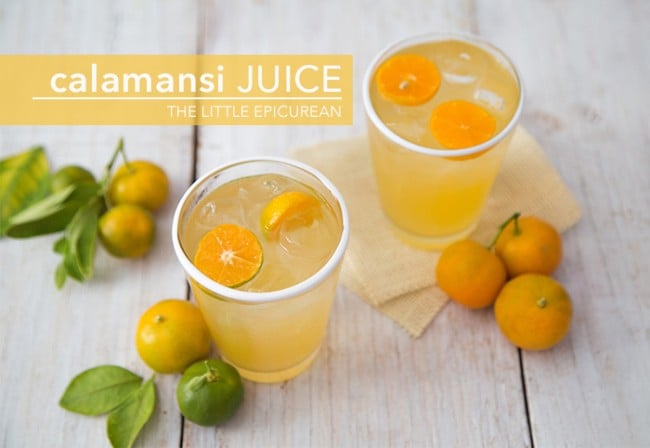
My dad was an avid gardener. My childhood home bloomed with a variety of fruit trees including: Fuji apples, persimmons, avocados, and pomelos.
But one tree that gave fruit all year long- the calamansi tree, better known in America as calamondin.
Ingredients
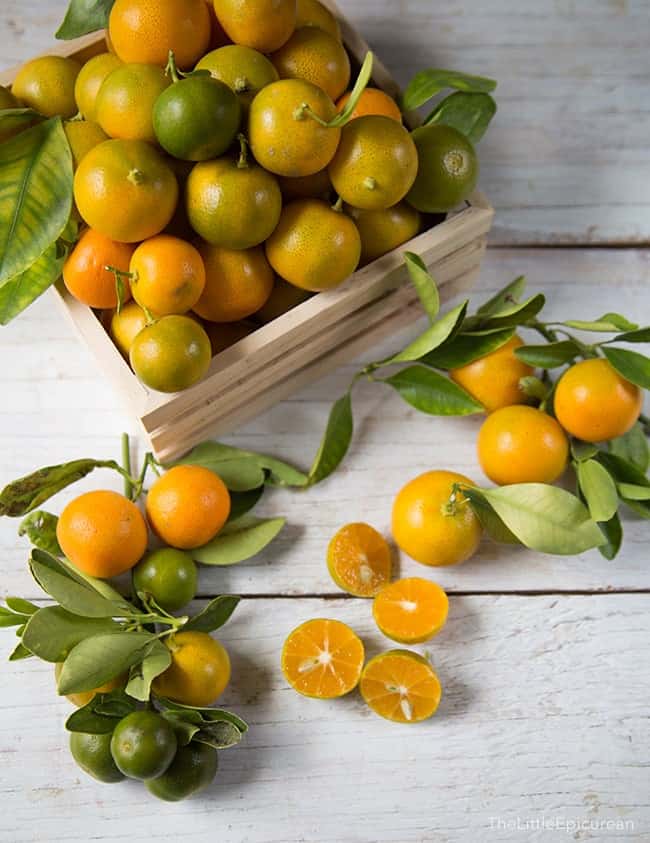
This quick and easy tangy lemonade only requires three ingredients: calamansi juice, water, and sugar.
Use fresh squeezed juice to achieve the best, most vibrant, clean flavor. Simply slice the calamansi in half and squeeze out the juice using your hands or a citrus press. Strain out any seeds.
Otherwise, you can find bottled or concentrated juice at many Asian grocery stores. These are convenient, however, I find store-bought juices to be muted in flavor and rather dull tasting. Frozen calamansi juice (sold in cubes or small ouches) are a better option, though a bit more difficult to find.
Mix the juice with fresh water, preferably filtered. You may sweeten the lemonade with granulated sugar. Or, take the extra step by making a simple syrup by boiling together equal parts water and sugar.
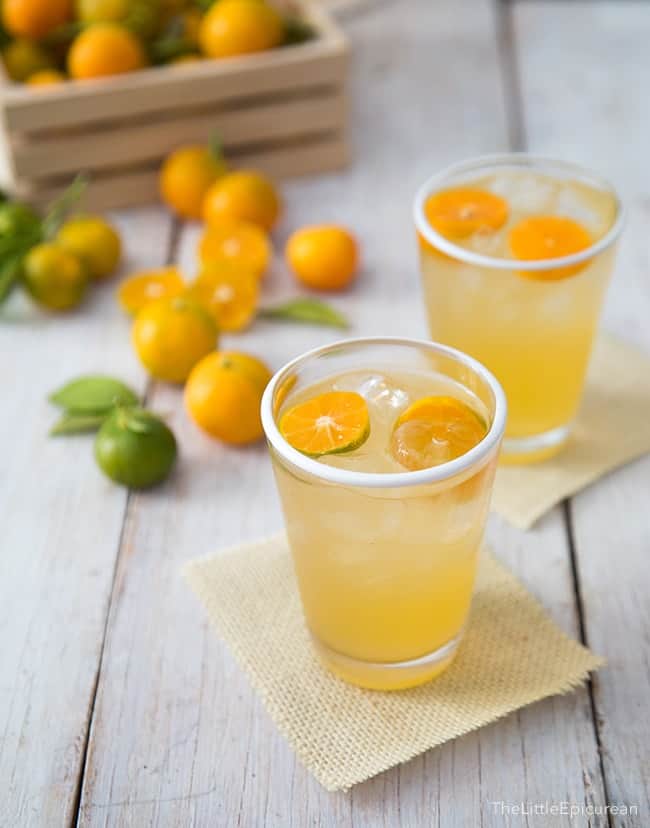
What is calamansi?
Calamansi is a small, round citrus fruit native to Southeast Asia, primarily grown in the Philippines. It has a tart, tangy flavor that tastes like a cross between lime and mandarin orange.
The calamansi starts off as a green fruit and slowly turns yellow-orange as it matures on the tree. You can use it at either stage. Regardless of the skin color, the juice will be very tart.
Calamansi (also spelled kalamansi) is used extensively in Filipino cooking. It is squeezed on pancit noodles and arroz caldo, used a marinade for meats, and flavors desserts.
It also has multiple purposes outside of the kitchen as well. Some people use it as a whitener for dark spots on knees and elbows. It’s also as an alternative to bleach for lightening hair.
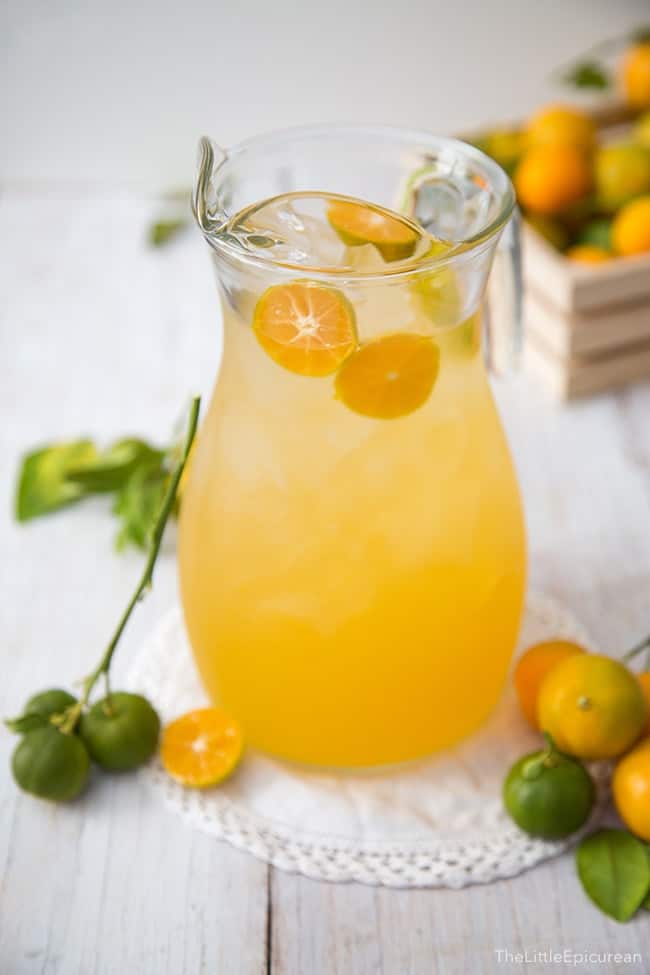
How to make Filipino Lemonade
No step-by-step images needed to make this easy drink. In a large pitcher, combine juice, water, and simple syrup. That’s it!
Cover and store in the fridge until chilled or ready to serve.
The process is just like making lemonade or limeade. This version tastes like a lemonade-limeade hybrid, but more tropical and aromatic.
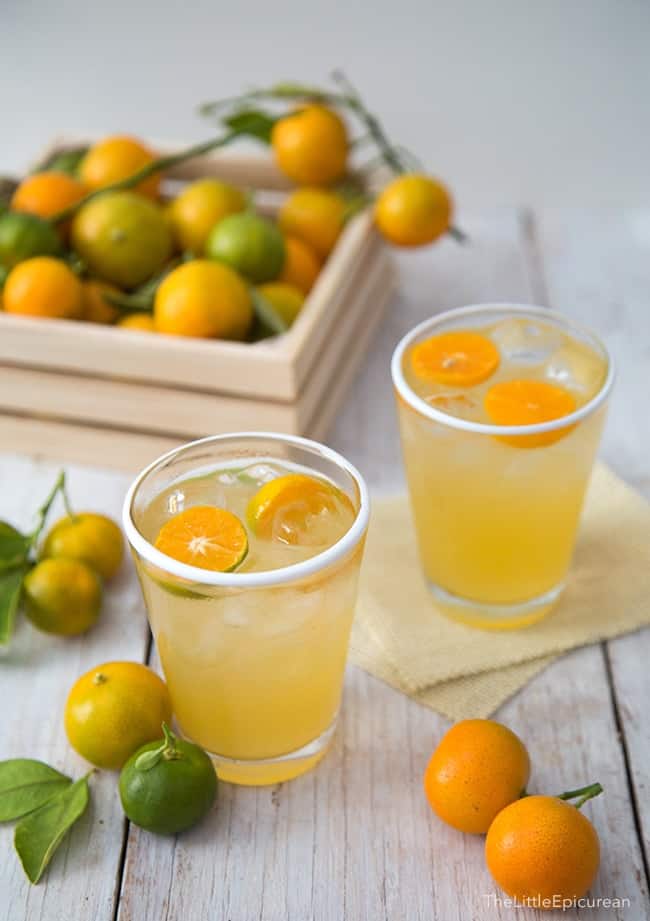
Serving Suggestions
This refreshing drink is best served ice cold! I prefer to keep my recipe on the tart/sour side. This prevents the juice from getting watered down due to the ice.
Store leftovers in a covered container in the fridge for up to three days. Stir well before serving.
Experiment using calamansi juice in place of lemonade in your favorite cocktails and mocktails. It makes for a fabulous margarita or is excellent in honey ginger tea.

More Filipino Classics
Calamansi Juice (Filipino Lemonade)

Ingredients
- 1 cup fresh squeezed calamansi juice, discard seeds and skin
- 2 cups water, preferably cool and filtered
- ¾ cup simple syrup, add more depending on desired sweetness
- ice, to serve
Simple Syrup:
- 1 cup water
- 1 cup granulated sugar
Instructions
- In a pitcher, combine calamansi juice, water, and simple syrup. Stir to combine. Store in fridge until chilled.
- Stir before serving. Serve with ice. Add more water or simple syrup to your liking.
Simple Syrup:
- In a sauce pot, bring water and sugar to a boil until sugar has dissolved. Remove from heat and allow to cool to room temperature. Store excess syrup in the fridge and use within 2 weeks.
Notes
- Freshly squeezed calamansi produces the best, most vibrant, clean flavor.
- If you cannot find fresh calamansi, you may sub in bottled or concentrated juice or frozen calamansi juice.
- I don’t recommend calamansi powder or extracts because they tend to contain additional ingredients such as sweeteners or artificial flavoring.
- Since I like to serve calamansi juice with a lot of ice, I keep my recipe a little on the tart/sour side. As the ice melts, the calamansi juice won’t get watered down.
- Store leftovers in a covered container in the fridge for up to three days. Stir well before serving.
Nutrition
Nutrition information is automatically calculated, so should only be used as an approximation.
 Like this recipe? Rate & comment below!
Like this recipe? Rate & comment below!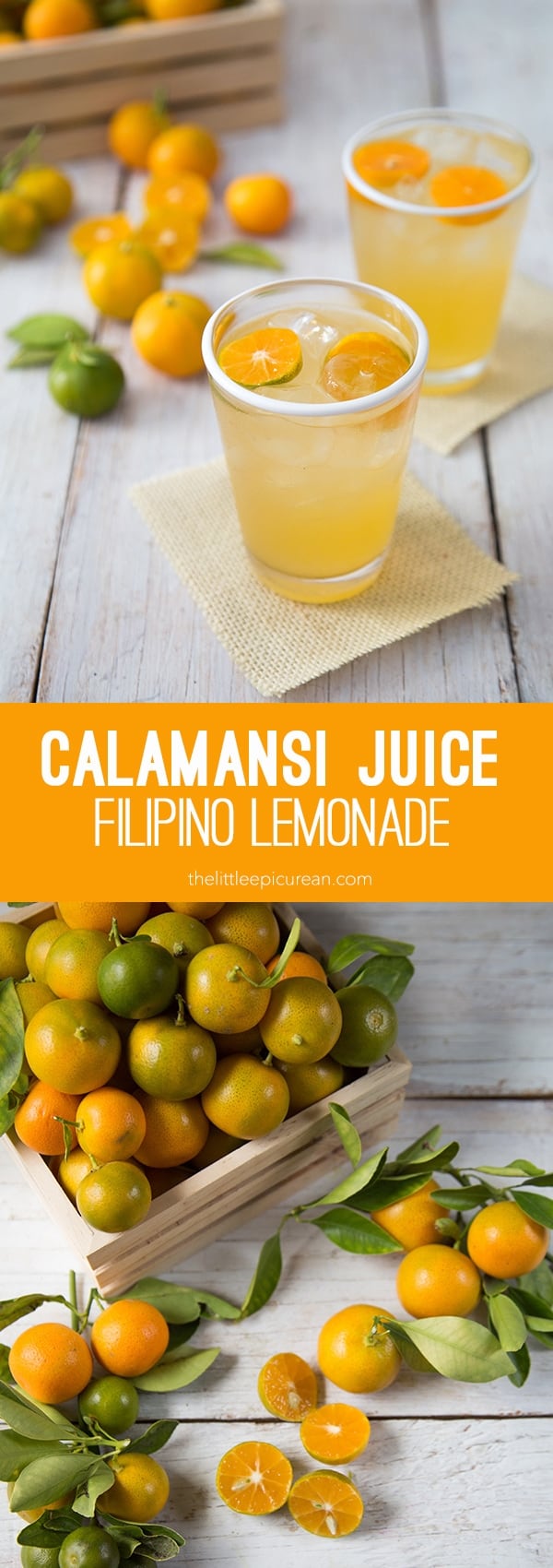
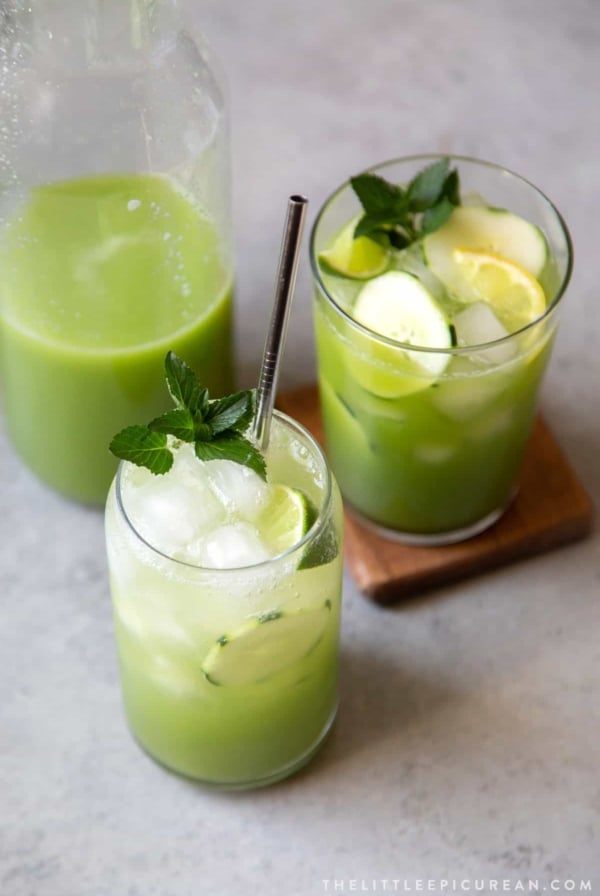
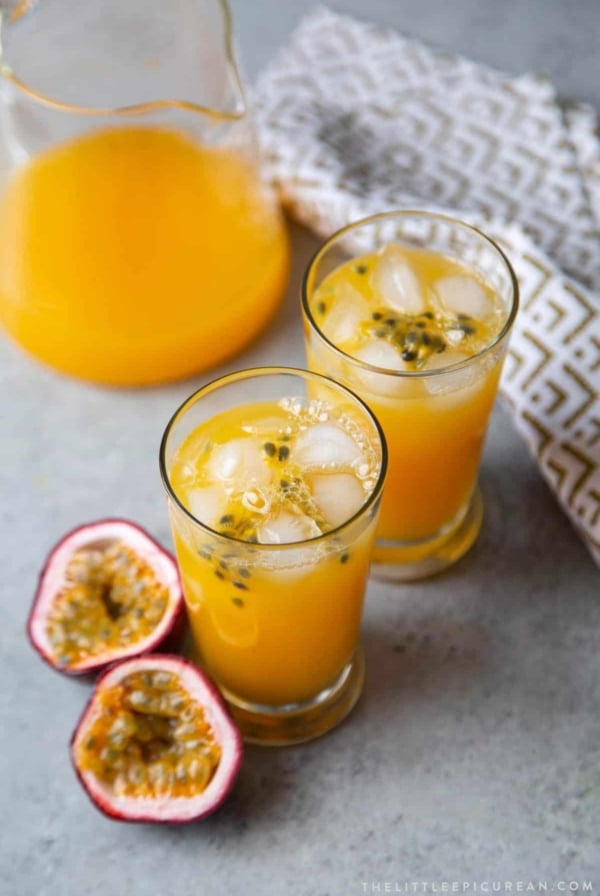

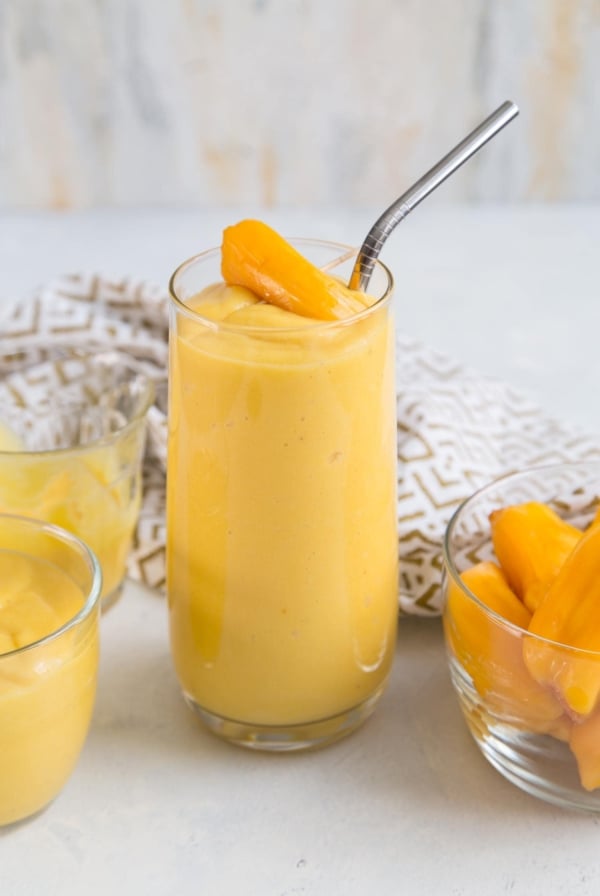





Yes! Love calamansi lemonade. Used to drink it a lot when I was young in the Philippines. Now, my friend brings some back from California to Utah and shares with me. Wish it was more available, but since it grows in tropical places, I’m lucky to get it from her. Great for colds and sore throats too! SourceIT
Thank you for your recipe for kalamansi juice. I used it a lot. I just added more water though like 2 more cups to dilute more of the juice and the sugar. And lots of ice!
So refreshing. I wish we had calamansi tree. Have you tried making it with lemon and lime mixture?
No, I haven’t. The flavor of calamansi is hard to mimic with lemon and lime.
I live in Yucca Valley, CA and would like to know where I could purchase the fruit
Filipino supermarkets or large Asian supermarkets. You can also try local nurseries that specialize in fruit trees.
my husband and I had a Nursery in Alaska and we grew and sold Calamondin trees, as houseplants and to grow in greenhouses. the fruit, chopped with peeles but seeds removed makes the best marmalade. I used an orange marmalade recipe.
That’s awesome! I didn’t know it could grow as houseplants! Yes, calamondin makes wonderful marmalade. I wish I had some right now!
Do you have a recipe for Calamansi Vinegar (or vinegar infused with it). I put in a tree this year and it has been bearing fruit. Calamansi vinegar is available to purchase online but cost $50 a bottle – ouch! So I am looking to make my own.
Thanks.
Hi! Unfortunately, I don’t have a recipe for that. I’ve never heard of calamansi vinegar!
Thank you for your very informative blog. I’d like to know if the yellow lemons that grow abroad ( USA, Australia, etc ) are planted the same way ( in terms of technique ) as our native calamansi. Would you know?
I have grown my own calamansi trees from seed. It is planted the same way you would care for other citruses.
I squeeze mine into soda water using my sodas stream – best drink – no sugar – not needed for a refreshing drink